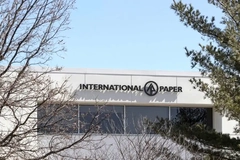The dragonfly effect: Researchers mimic insect wings with antibacterial packaging material
29 Mar 2022 --- Researchers at RMIT University in Australia have created antibacterial material for plastic packaging by mimicking the structure of insect wings. The team says their findings could lead to important strategies for fighting bacterial infections transferred through pharmaceutical and F&B products.
The study, published in Applied Nanomaterials, details how the researchers replicated the nanostructure of moth and dragonfly wings to create material that can destroy bacteria on the surface of common forms of plastic.
Speaking to PackagingInsights, Elena Ivanova, an RMIT professor heading the team, explains: “Bacteria are the oldest life forms on our planet. Over 3.6 billion years of evolution, bacteria developed a remarkable ability to survive in any ecological environment by colonizing the surfaces and forming a so-called biofilm.”
“Once the biofilm is formed, it is very difficult, almost impossible, to get rid of bacteria. Since bacteria are protected by an extracellular polymeric matrix of the biofilm, the treatment by using chemicals or antibiotics is not successful and surviving bacteria easily develop the resistance to antibiotics.”
“We thought it would be more efficient if we could prevent bacteria from attachment and biofilm formation. And we look around trying to find the surfaces that are keeping free from bacteria in nature,” she says.
Insects against infection
Insect wings are one such example of native surfaces that remain free from bacteria, Ivanova explains.
 RMIT Multifunctional Mechano-biocidal Materials Research group (L–R) Denver Linklater, Phuc Le, Elena Ivanova, Arturo Aburto-Medina, Karolline De Sousa (Image credit: RMIT University).“To understand how the surfaces of insect wings keep clean, we had to comprehensively study the surfaces and realized that the wing surfaces have protrusions, just 240 nanometers tall. The next challenge was to develop the nanofabrication technologies, which will be suitable to achieve precise resolution at the nanometer scale.”
RMIT Multifunctional Mechano-biocidal Materials Research group (L–R) Denver Linklater, Phuc Le, Elena Ivanova, Arturo Aburto-Medina, Karolline De Sousa (Image credit: RMIT University).“To understand how the surfaces of insect wings keep clean, we had to comprehensively study the surfaces and realized that the wing surfaces have protrusions, just 240 nanometers tall. The next challenge was to develop the nanofabrication technologies, which will be suitable to achieve precise resolution at the nanometer scale.”
The advanced nanofabrication technology was then collaboratively developed by teams in Japan at Tokyo Metropolitan University and the Kaiteki Institute and Mitsubishi Chemical, and RMIT University.
It is applicable for nano-texturing polymeric surfaces like PET, PP, acrylic and nylon. “The packaging industry will directly benefit from developing antimicrobial polymer materials for packaging applications, designed to reduce microbial growth on food surfaces,” asserts Ivanova.
Scaling the tech
The nanostructure of insect wings pulls bacteria apart when it settles on their surfaces, say the researchers. This discovery, and its successful replication for plastic packaging, is a “big step” toward producing shelf life extending materials for F&B products and protection for pharmaceuticals, they claim.
The researchers are now looking for help in the next phase of research, which will entail scaling up the technology for commercial use, and adapting the developing findings to make them more applicable to soft plastics like PE.
“These surfaces, so far, are the only example of antibacterial nanostructured polymeric films with such nanoscale resolution,” says Ivanova.  The nanopillars on the surface of a dragonfly wing (magnified 20,000 times).
The nanopillars on the surface of a dragonfly wing (magnified 20,000 times).
“Any optimized structure and shape may be upscaled for the manufacturing process using, for example, a roll-to-roll process that can be applied to produce a continuous nanostructured antibacterial film.”
Antimicrobial advances
This year, researchers at Harvard T.H. Chan School of Public Health, US, and Nanyang Technological University, Singapore began developing “smart” food packaging material that is biodegradable and kills harmful microbes.
Their material is made from a type of corn protein called zein, starch and other naturally derived biopolymers, infused with a cocktail of natural antimicrobial compounds, which they say could also extend the shelf life of fresh fruit by two to three days.
By Louis Gore-Langton












